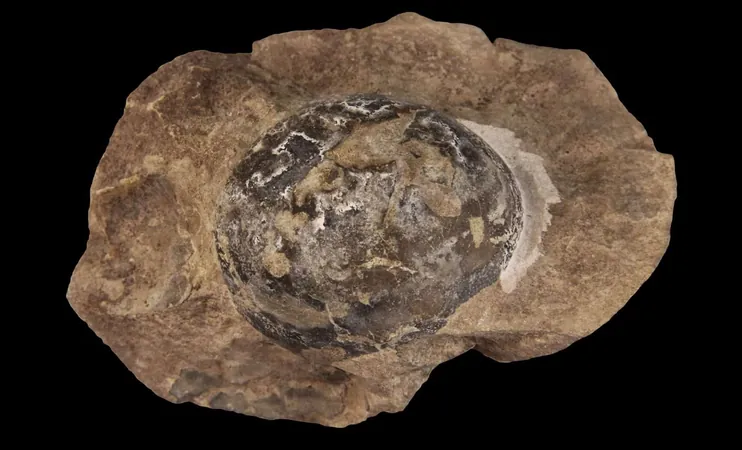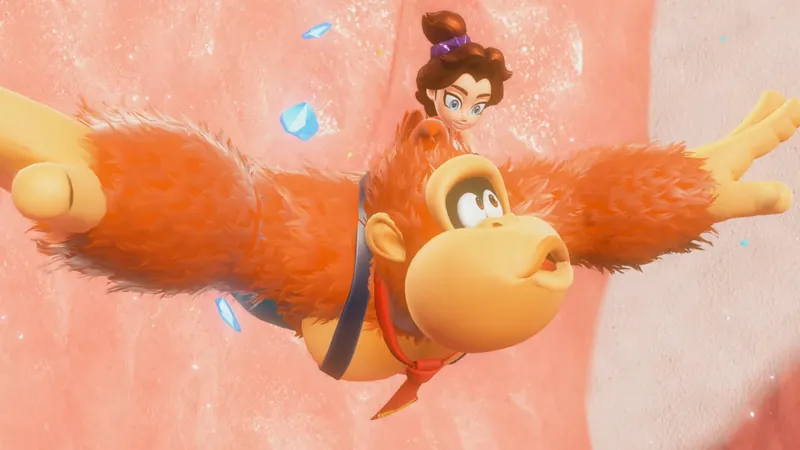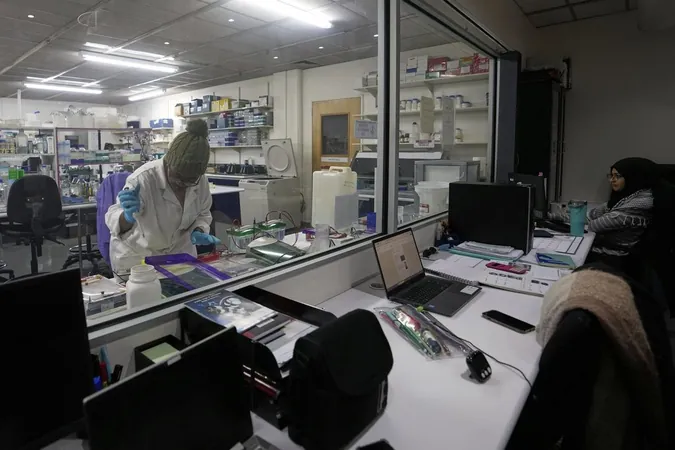
Shocking Discovery in Antarctica: Massive Fossil Egg Rewrites Marine Reptile History!
2025-05-26
Author: William
A Groundbreaking Find in the Frozen South
In an astonishing revelation that’s turning the field of paleontology on its head, scientists have uncovered a massive fossil egg in Antarctica that challenges everything we thought we knew about ancient marine reptiles and their reproductive practices. This soft-shelled giant, dubbed Antarcticoolithus bradyi, dates back approximately 68 million years and measures about the size of a football, making it the largest soft-shelled egg ever discovered and the second-largest of any known species on Earth!
Unlocking the Secrets of Prehistoric Reproduction
Unearthed in 2011 during a Chilean expedition, this egg has baffled experts for over a decade. Unlike the hard-shelled eggs typical of dinosaurs, this fascinating specimen sports a soft, thin shell akin to that of modern snakes and lizards. Researchers carefully studied its peculiar structure and size—approximately 11 inches long and 8 inches wide—while affectionately referring to it as “The Thing,” a nod to the iconic Antarctic horror film. Julia Clarke, a vertebrate paleontologist at the University of Texas at Austin, emphasizes its uniqueness: "There’s no known egg like this. It is exceptional in both size and structure," she said.
A Closer Look at its Roots
Notably, this fossil was found near the skeletal remains of Kaikaifilu hervei, a colossal mosasaur that reached lengths of over 23 feet. These prehistoric reptiles ruled the oceans during the late Cretaceous period and were closely related to today’s snakes and lizards. The positioning of the egg, alongside juvenile mosasaur and plesiosaur remains, suggests this location might have acted as a marine reptile nursery. Lead researcher Lucas Legendre stated, "It is from an animal the size of a large dinosaur, but it is completely unlike a dinosaur egg," pointing to the egg's likely parentage as a mosasaur.
Revolutionizing Our Understanding of Dinosaur Eggs
The implications of this discovery are groundbreaking, disrupting long-standing theories about dinosaur reproduction. Traditionally, soft-shelled eggs have been rare in the fossil record, leading scientists to assume hard shells were the norm. However, this egg challenges that belief. As Mark Norell, chair of paleontology at the American Museum of Natural History, noted, "These findings prove otherwise," implying that soft-shelled eggs might have been the return of the norm for many ancient reptiles.
New Perspectives on Evolution
This transformative finding extends beyond just dinosaur taxonomy; it redefines the broader narrative of evolution itself. Scientists have relied heavily on comparisons with modern birds and crocodiles to interpret dinosaur biology. But emerging fossil evidence is revealing a much richer and more complex picture. Matteo Fabbri from Yale points out, "From an evolutionary perspective, this makes much more sense than previous hypotheses." This insight highlights the necessity of looking beyond today's species to fully grasp the intricacies of ancient life.
Antarctica: A Treasure Trove for Paleontology
With this major discovery, Antarctica is proving to be an invaluable window into the prehistoric past, showing us that there’s still so much more to learn about the evolutionary history of life on Earth. As scientists continue to explore this icy landscape, who knows what other surprises await that could further rewrite our understanding of ancient creatures?









 Brasil (PT)
Brasil (PT)
 Canada (EN)
Canada (EN)
 Chile (ES)
Chile (ES)
 Česko (CS)
Česko (CS)
 대한민국 (KO)
대한민국 (KO)
 España (ES)
España (ES)
 France (FR)
France (FR)
 Hong Kong (EN)
Hong Kong (EN)
 Italia (IT)
Italia (IT)
 日本 (JA)
日本 (JA)
 Magyarország (HU)
Magyarország (HU)
 Norge (NO)
Norge (NO)
 Polska (PL)
Polska (PL)
 Schweiz (DE)
Schweiz (DE)
 Singapore (EN)
Singapore (EN)
 Sverige (SV)
Sverige (SV)
 Suomi (FI)
Suomi (FI)
 Türkiye (TR)
Türkiye (TR)
 الإمارات العربية المتحدة (AR)
الإمارات العربية المتحدة (AR)